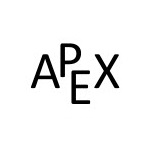2.3.1: Ejercicios 2.3
- Page ID
- 114019
Términos y Conceptos
Ejercicio\(\PageIndex{1}\)
¿Qué significa si\(x=2\) is in the domain of \(f(x)\)?
- Responder
-
Significa que\(2\) is a valid input for the function \(f\).
Ejercicio\(\PageIndex{2}\)
¿Qué significa si\(x=4\) is not in the domain of \(f(x)\)?
- Responder
-
Significa que\(4\) is not a valid input for the function \(f\).
Ejercicio\(\PageIndex{3}\)
T/F: El dominio de\(f(g(x))\) depends only on the domain of \(g(x)\). Explain.
- Responder
-
Falso; depende tanto del dominio de\(f(x)\) and the domain of \(g(x)\).
Ejercicio\(\PageIndex{4}\)
T/F: El dominio de\(\frac{f(x)}{g(x)}\) depends only on where \(g(x)=0\). Explain.
- Responder
-
Falso; si\(g(x)=0\), \(\frac{f(x)}{g(x)}\) is not defined, but \(f(x)\) may not be defined everywhere
Problemas
En ejercicios\(\PageIndex{5}\) -\(\PageIndex{7}\), expresar el dominio de la función dada usando notación de intervalo.
Ejercicio\(\PageIndex{5}\)
\(x\leq 4\) and \(x>-6\)
- Responder
-
\(x \in (-6,4]\)
Ejercicio\(\PageIndex{6}\)
\(-3\leq x \leq 10\)
- Responder
-
\(x \in [-3,10]\)
Ejercicio\(\PageIndex{7}\)
\(x > 4\) or \(-2>x\)
- Responder
-
\(x \in (-\infty,-2)\cup (4,\infty)\)
En ejercicios\(\PageIndex{8}\) -\(\PageIndex{11}\), escribir cada enunciado usando desigualdades.
Ejercicio\(\PageIndex{8}\)
\(x \in [3,4)\cup (4,\infty)\)
- Responder
-
\(3 \leq x <4\) or \(x>4\)
Ejercicio\(\PageIndex{9}\)
\(x \in [-2,4)\)
- Responder
-
\(-2 \leq x < 4\)
Ejercicio\(\PageIndex{10}\)
\(x \in (5,6] \cup [7,8)\)
- Responder
-
\(5 < x \leq 6\) or \(7 \leq x <8\)
Ejercicio\(\PageIndex{11}\)
\(x \in (5,6] \cup [7,8)\)
- Responder
-
\(5 < x \leq 6\) or \(7 \leq x <8\)
En ejercicios\(\PageIndex{12}\) -\(\PageIndex{22}\), expresar el dominio de la función dada usando notación de intervalo.
Ejercicio\(\PageIndex{12}\)
\(\displaystyle \frac{\sqrt{x+11}}{x-11}\)
- Responder
-
\(x \in [-11,11) \cup (11,\infty)\)
Ejercicio\(\PageIndex{13}\)
\(\displaystyle \frac{\ln{(x-6)}}{2x-26}\)
- Responder
-
\(x \in (6,13)\cup (13, \infty)\)
Ejercicio\(\PageIndex{14}\)
\(\displaystyle \frac{2t}{\sqrt{t-5}}\)
- Responder
-
\(t \in (5,\infty)\)
Ejercicio\(\PageIndex{15}\)
\(\displaystyle \ln{(\sqrt{x+3})}\)
- Responder
-
\(x \in (-3,\infty)\)
Ejercicio\(\PageIndex{16}\)
\(\displaystyle \theta^3+4\theta^2-2\theta+\pi\)
- Responder
-
\(\theta \in (-\infty,\infty)\)
Ejercicio\(\PageIndex{17}\)
\(\displaystyle \frac{\log_3{(x-4)}}{\log_3{(2x)}}\)
- Responder
-
D:\((4,\infty)\)
Ejercicio\(\PageIndex{18}\)
\(\displaystyle \frac{x}{\log_2{(2x-1)}}\)
- Responder
-
D:\((\frac{1}{2},1)\cup(1,\infty))\)
Ejercicio\(\PageIndex{19}\)
\(\displaystyle f(x) = \ln{(4-x^2)}\)
- Responder
-
D:\((-2,2)\)
Ejercicio\(\PageIndex{20}\)
\(\displaystyle f(x) = \ln{(x^2-4)}\)
- Responder
-
D:\((-\infty,-2) \cup(2, \infty)\)
Ejercicio\(\PageIndex{21}\)
\(\displaystyle f(x) = \sqrt{(x+3)^2-4}\)
- Responder
-
D:\((-\infty,-5] \cup [-1, \infty)\)
Ejercicio\(\PageIndex{22}\)
\(\displaystyle f(x) = \sqrt[3]{(x-2)^3 +1}\)
- Responder
-
D:\((-\infty,\infty)\)


